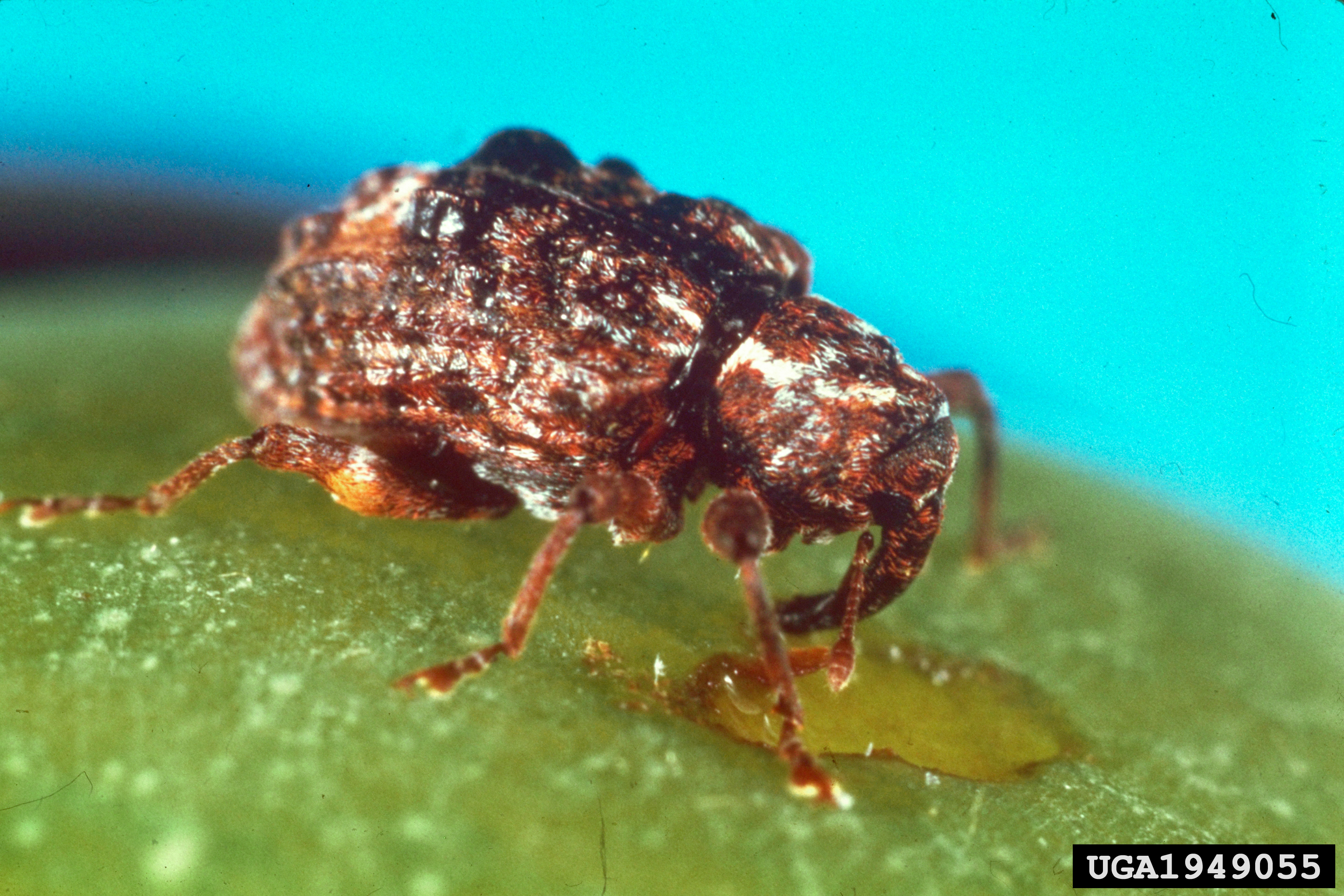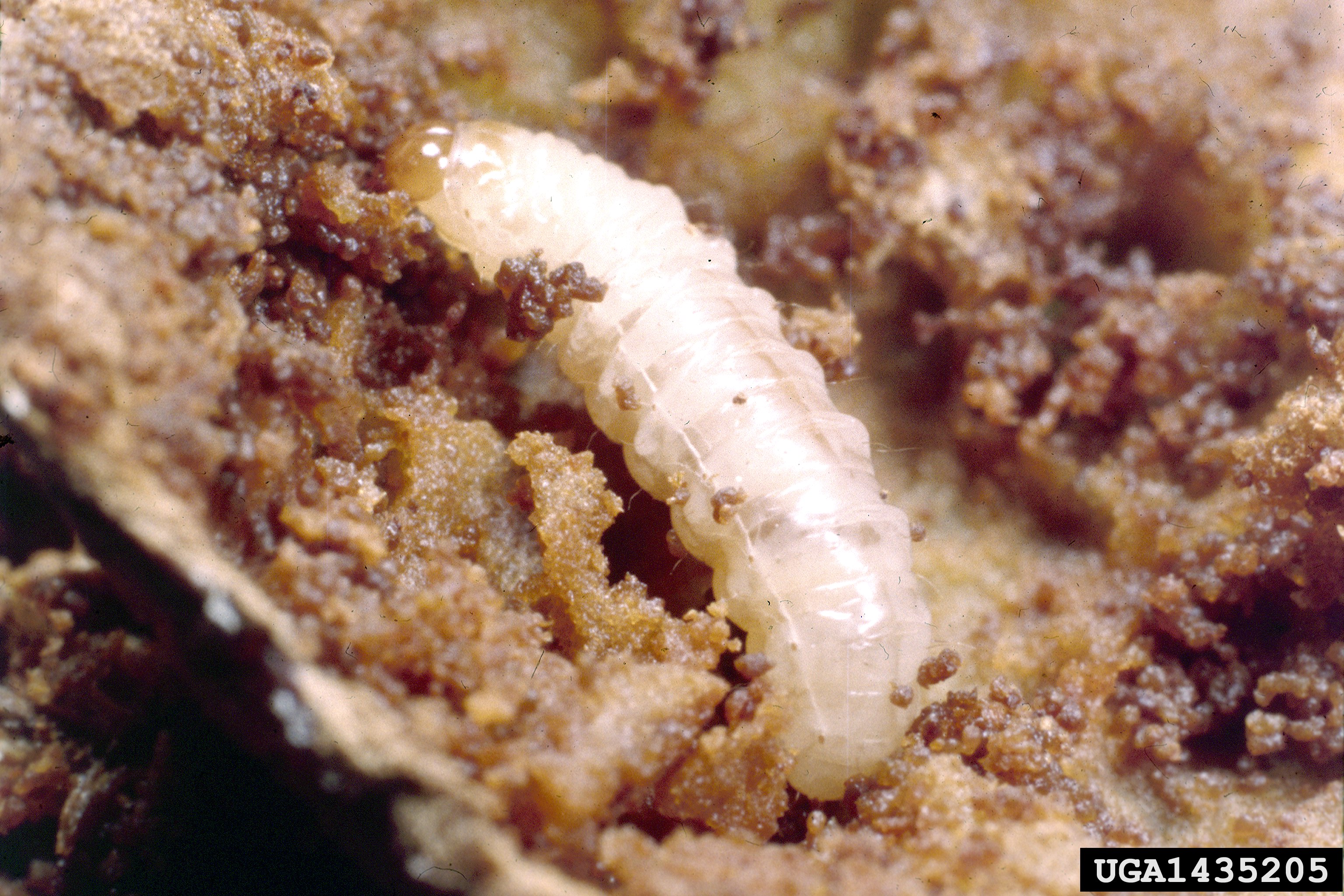
Plum curculio
| Primefact number | Edition | Published | Author |
|---|---|---|---|
| 1295 | First | Apr 2013 | Plant Biosecurity and Product Integrity |


Plum curculio (Conotrachelus nenuphar) is an exotic plant pest. This insect pest is a serious threat to Australia’s apple, pear and stonefruit industries.
Plum curculio is a small weevil 4-6 mm long (Figure 1).
Both adult and larval plum curculios cause surface and internal damage to developing fruit.
Notifiable status
Plum curculio (Conotrachelus nenuphar) is a notifiable plant pest in NSW.
All notifiable plant pests and diseases must be reported within 1 working day. You can report notifiable plant pests and diseases by one of the following methods:
- Call the Exotic Plant Pest Hotline 1800 084 881
- Email biosecurity@dpi.nsw.gov.au with a clear photo and your contact details
- Complete an online form
A full list of notifiable plant pests and diseases can be found in Schedule 2 of the NSW Biosecurity Act 2015.
Host range
Horticultural commodities affected by plum curculio include apple, apricot, blueberry, cherry, nectarine, peach, pear, plum and quince.
Damage
Surface feeding and egg laying by adult plum curculio can scar fruit and lead to misshapen development. Feeding by larvae can cause premature fruit drop.
On nectarines and plums, adult plum curculio damage consists of circular feeding punctures or small crescent shaped oviposition wounds and egg laying punctures made by females.
On peaches the feeding area will show up as an area of shiny fuzz. Teasing away the fuzz will expose a feeding or oviposition scar and possibly an oval white egg or brown larval tunnel into the flesh of the fruit. These feeding and oviposition sites cause scarring on the skin of the fruit and as fruit develop they become malformed. Feeding and egg laying sites also provide entry for secondary pathogens such as the brown rot fungus. Larvae tunnel and feed in developing fruit. The larval tunnels bore down to the stone.
Description
Adults
Adult plum curculios are a brown-black colour with lighter grey or brown mottled markings.
Adult weevils have mouthparts at the end of a curved snout that is about one quarter the length of the body. Their backs are rough and bear two prominent humps and two smaller humps.
Immature stages
Eggs of plum curculio are white, oval shaped and 0.35 mm by 0.6 mm in size.
Larvae are slightly curved in shape. They are a yellowish-white in colour with a brown head and about 6-9 mm long when fully grown (Figure 2).
Pupae are also yellowish-white in colour with dark spots in the position of the eyes.
Behaviour
Adult plum curculio overwinter in ground litter or other protected places both in and around orchards. In spring adults migrate into orchards and feed on buds, flowers and newly set fruit. Their feeding results in surface scaring of the fruit (also called cat-facing) making the fruit unmarketable.
Female plum curculio cuts a hole in the fruit with her mouthparts and hollows out a small cavity then turns and deposits an egg in the cavity. Eggs hatch into larvae which burrow into the fruit. When the larvae are fully developed they leave the fruit through clean exit holes. No frass or webbing is evident.
Plum curculios are more active at night.
Distribution
Plum curculio is endemic to North America. It occurs on the eastern side of the Rocky Mountains in both the USA and Canada.
Spread
Local spread of plum curculio occurs by adults flying to new food sources.
International spread could occur through undetected larvae in infested fruit or adults as contaminants in packing materials.
Actions to minimise risks
Put in place biosecurity best practice actions to prevent entry, establishment and spread of pests and diseases:
- practice “Come clean, Go clean”
- ensure all staff and visitors are instructed in and adhere to your business management hygiene requirements
- source propagation material of a known high health status from reputable suppliers
- monitor your orchard regularly
- keep records

